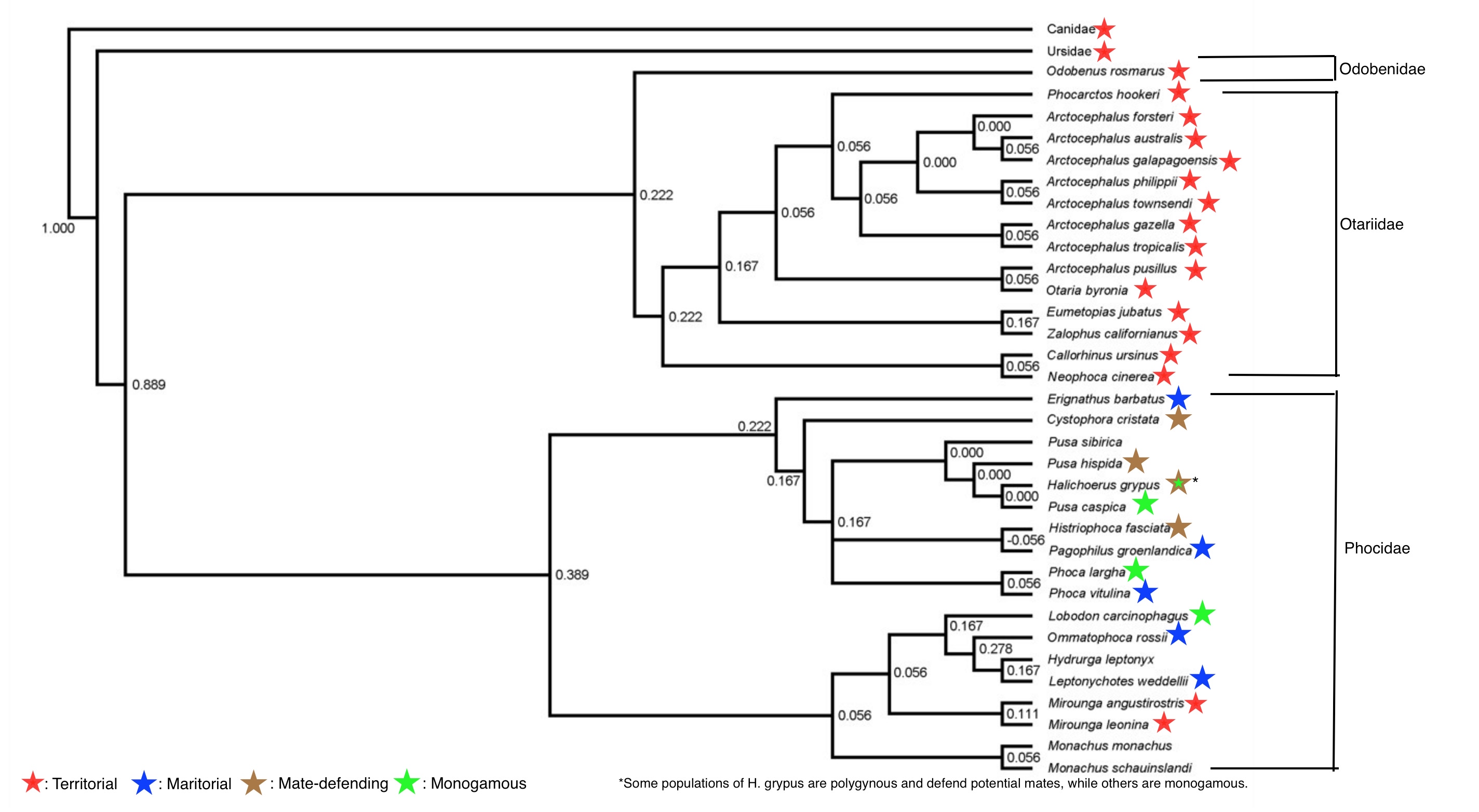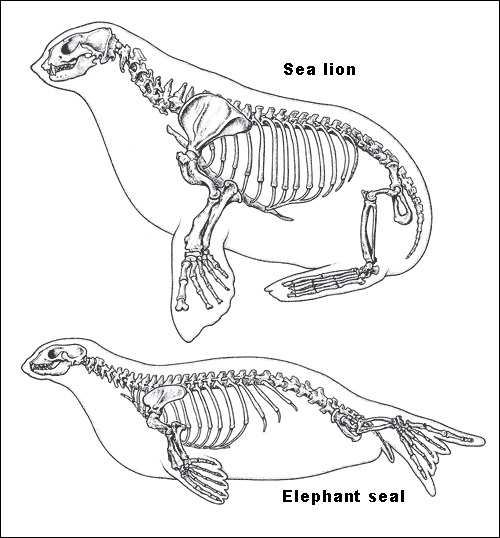Territorial Behavior in Pinnipeds
Biology 342 Fall 2015
Denis Ivanov, Stephanie Opiyo
Phylogeny
Phenotypic diversity

Figure 1: Annotated phylogeny of clade pinnepedia (from Higdon, Bininda-Emonds et al. 2007). Annotations show the variation in territorial behavior phenotype across the clade and two related groups.
The annotations above show that all members of the families otariidae and odobenidae are territorial, in addition to the two species of elephant seal, Mirounga angustiriosis and Mirounga leonina. Clearly then, alternate reproductive strategies evolved when family phocidae split from otariidae. These strategies can be explained by differences in the life histories of these seals.
Both species of Mirounga are one of only a handful of phocid species that breed terrestrially, much akin to all species otariid and odobenid, with the vast majority of phocid copulation occurring in the water. Additionally, the establishment of maritories (aquatic territories near terrestrial resources [breathing holes, haul-out spots, etc]) is in turn dependent on those resources being present in a limiting abundance, otherwise it is shown that mate-guarding (either polygynous or monogamous) or simply being monogamous is more advantageous for a seal.
Behavioral ancestry
The annotation also makes note of another important point: pinnipeds are caniforms, as are mustelids, ursids, and canids. All three of these species are known to display territorial behavior, therefore it can be inferred that territoriality is an ancestral trait, or, one that is common throughout multiple taxa that share a common ancestor (Powell, Zimmerman, & Seaman, 1997) (Cuthbert & Sommer, 2002).
Physiological Diversity
The clear distinction between territorial phenotypes in the families phocidae and otariidae can additionally be explained by analyzing major physiological differences between the two species. The most important physiological difference to compare is that of the divergence of hindlimb morphology between the two families, shown in the image below.

Comparing skeletal structures of a typical otariid (top) and a typical phocid (bottom). (Courtesy of UCSD Earthguide.)
Otariids have developed hindlimbs that can be rotated and used to waddle across land, whereas phocids forgo that adaptation, restricting their terrestrial locomotion to a body wave-like motion.
Simply compare this youtube video (of an otariid):
and this youtube video (of a phocid).
Because of these differing adaptations, it seems logical that a phocid would prefer to spend as much time in the water as possible, whereas an otariid could be more flexible, allowing it to breed on land. This then creates a difference in breeding location, and, by extension, phenotypes of territorial behavior.